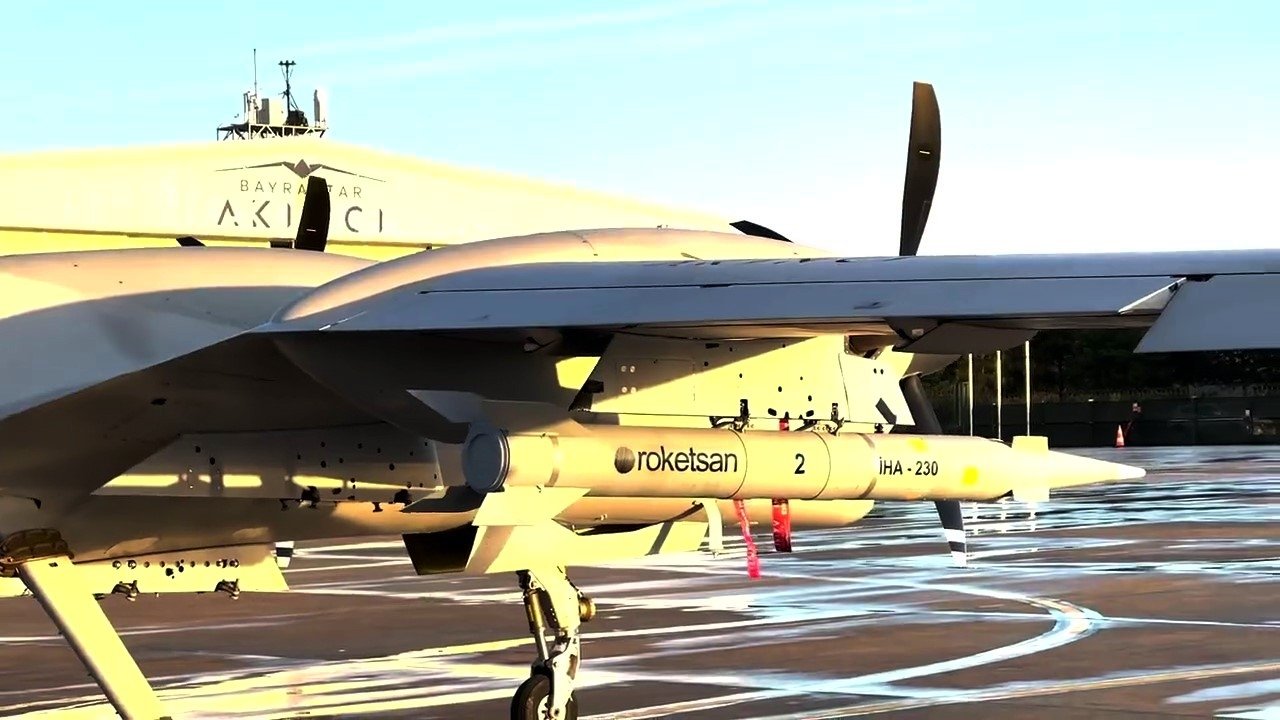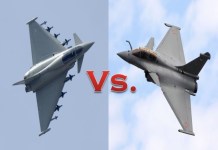In August 2021, Turkish President Recep Erdogan vowed to make his country a world leader in drone technology while inducting the first Akinci Unmanned Aerial Combat Vehicle (UCAV) into service. Less than two years later, the country may be on its way to occupying that top spot.
The Akinci, Turkish for “Raider,” is a high-altitude, long-endurance UAV capable of performing air-to-ground and air-to-air attack missions.
The President of the Defense Industry Agency of Turkey announced on Twitter last month that Baykar had supplied three more Akinci drones to the Turkish military.
He said, “We continue production without slowing down to increase the dominance of our security forces in the sky. Finally, we delivered three more Akinci.”
Güvenlik güçlerimizin gökyüzündeki hakimiyetini artırmak için üretmeye hız kesmeden devam ediyoruz.
Son olarak 3 adet #AKINCI TİHA'yı daha teslim ettik. ✈️??
➡️ @BaykarTech #İstiklâlveİstikbâlimizİçin pic.twitter.com/n2rtcLlPuC
— Ismail Demir (@IsmailDemirSSB) December 26, 2022
With drone warfare becoming increasingly intrinsic to modern battlefields, as demonstrated in the ongoing Russia-Ukraine war, Turkey has been positioning itself as a pioneer in advanced drone technology and pitching its combat UAVs to partners worldwide.
After the combat success recorded by TB2 early in the conflict in Ukraine, the focus has shifted to the more advanced and combat-capable Akinci.
A Turkish Twitter account that regularly posts Turkish military updates recently said in a tweet: “AKINCI will be the first UAV in the world to carry AESA radar and beyond-sight air-to-air missiles. In the test shot from AKINCI, the target over 100 kilometers was hit with Turkey’s first supersonic missile TRG-230-iHA.”
??TÜRK SİHALARI RAKİPLERİYLE ARAYI AÇIYOR
AKINCI dünyanın AESA radar ve görüş ötesi havadan havaya füze taşıyan ilk SİHA'sı olacak
AKINCI'dan Yapılan test atışında , Türkiye'nin ilk süpersonik füzesi TRG-230-iHA ile 100 kilometre üzerindeki hedef tam isabetle vurulmuştu. pic.twitter.com/DgNb5diHdO
— Oğuzhan Uygun (@ogzhn_uyg) January 4, 2023
It is a remarkable feat that Turkey’s Akinci UCAV will be equipped with Active Electronically Scanned Array (AESA) radar.
In November 2022, Ismail Demir unveiled the new Aselsan AESA radar. He stated that the system would retrofit the Akinci unmanned aerial vehicle (UAV) and the upcoming Turkish Fighter Experimental (TF-X)/National Combat Aircraft.
Having a drone equipped with AESA radar will significantly bolster the electronic warfare capabilities of the country. AESA radars offer significant benefits regarding target acquisition speed, the distance at which threats and potential threats can be identified, and the accuracy and fidelity of the resulting tracks, particularly for smaller objects.

They are significantly more reliable, resulting in more “up time” and better jamming resistance. Turkey has now joined the select nations that manufacture AESA radars domestically. Integrating this radar into its most promising combat drone will be a significant push to its drone manufacturing and export.
Further, this is also expected to fill a critical gap in Turkey’s military capability left by its exclusion from the F-35 consortium.
As mentioned in detail by EurAsian Times, integrating an AESA radar into the F-16 C/D fighter jets and the UAVs will bridge the gap with Rafales in the rival Hellenic Air Force that sports an advanced AESA radar.
Is Turkey’s Akinci Ready For High-End Combat?
The Akinci combat drone has a length of 12.2 meters, a height of 4.1 meters, and a wingspan of 20 meters. It can fly at an altitude of 40,000 feet (12,192 meters), has a take-off weight of 5,500 kilograms, and carries a maximum payload of 1,350 kilograms.
Several military experts have suggested that Akinci’s larger combat payload capacity, compared to the Bayraktar TB2, which it seeks to replace, would bring more lethal weaponry and flexible concepts of operations (CONOPS) to the battlefield. However, the drone outperformed even these expectations.
Last month, the Akinci drone successfully test-fired Turkey’s first air-to-ground supersonic missile, TRG-230, after hitting a target at a distance of over 100 kilometers (62 miles). The test marked the first ballistic supersonic missile launched from air to ground, and Akinci is the only UAV to achieve the feat.
A few days later, after this milestone was achieved, the Akinci underwent a firing test with a new-generation guidance kit. The drone struck the designated target with pinpoint accuracy with a 1,000-pound or455-kilogram MK-83 bomb equipped with the guidance kit named Gökçe.

Since then, Akinci also underwent a test with an Aselsan laser guidance kit, striking the target with pinpoint accuracy. During the test firing, the laser guidance kit was integrated with an Aselsan-developed MK-82 bomb.
In addition to advanced radar and precision munition, the UCAV could also be used as a mother ship for drone-swarming attacks. For example, in 2019, Prof. Ismail Demir, the head of Turkey’s Presidency of Defense Industries (SSB), posted a simulation on his Twitter feed depicting the indigenous ‘Alpagu’ kamikaze drones released by the Akinci drone.
In March 2022, the CEO of Baykar, Haluk Bayraktar, revealed that the company was concluding two export contracts for the Akinci drone without specifying the countries. However, Turkey’s close allies Azerbaijan and Pakistan have been understood to be the first to secure delivery.
In October 2022, Pakistan Air Force’s (PAF’s) Public Relations Department released a video featuring various aircraft and weapon systems within the PAF’s fleet, including the Turkish-made Akinci combat drone. The unmanned plane is more advanced than the company’s Bayraktar TB2, which has been sold to countries including Ukraine and Poland.
Affordability and combat successes have long been regarded as the selling point for Turkish drones, especially for nations that cannot spend huge sums buying western UCAVs. Turkey will surely put Akinci up for export, but more details may emerge later.
- Contact the author at sakshi.tiwari9555 (at) gmail.com
- Follow EurAsian Times on Google News




